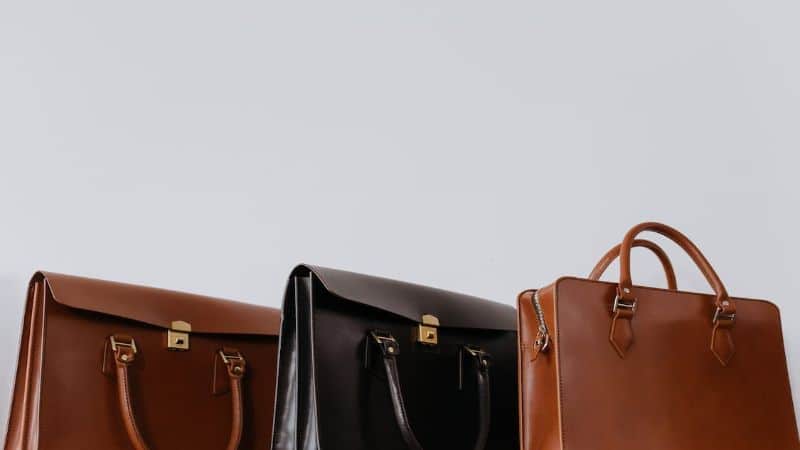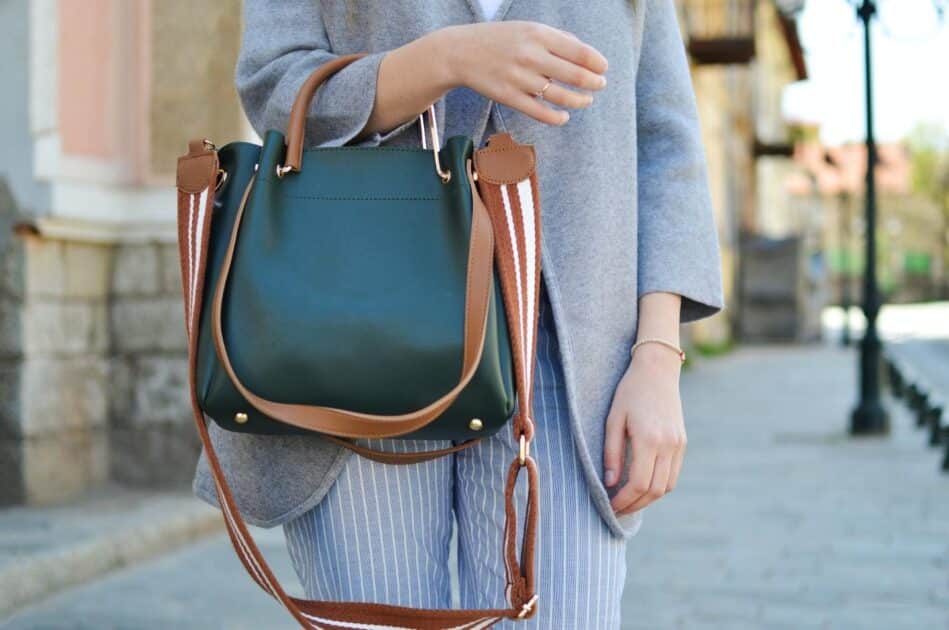Ever wondered how long your trusty handbag will stick by your side? It’s not just a bag; it’s your daily companion, toting around your essentials and braving the elements with you. But like all good things, handbags have their own lifespan.

The longevity of your handbag depends on a cocktail of factors, from the material and craftsmanship to how you care for it. Some may last a few months, while others could be your plus-one for years. Let’s dive into what determines a handbag’s staying power and how you can make yours last longer.
Factors that affect the lifespan of a handbag
Material quality is critical. High-grade leather outlasts synthetic fabrics, resisting wear and tear. Similarly, canvas is durable but requires maintenance to retain its integrity.
Craftsmanship cannot be overlooked. Stitching should be even and secure. Prioritize reinforced seams and quality hardware; these handbags withstand the test of time better than those with weak construction.
Your usage determines longevity. Overloading can strain seams and handles, shortening lifespan. Daily use accelerates wear, so rotate bags to distribute wear evenly.
Environmental conditions play a role too. Excessive moisture leads to mold and fabric degradation. Sunlight can fade colors. Store your handbag in a cool, dry place away from direct sunlight.
Proper care is essential. Regular cleaning prevents build-up of dirt and oils that can damage materials. Use recommended products for your handbag’s material.
Here are quick tips for care:
- Wipe with a soft cloth regularly.
- Condition leather annually.
- Avoid harsh cleaning agents.
- Store with stuffing to maintain shape.
Remember, more expensive doesn’t always mean longer-lasting. Sometimes, moderately priced handbags boast similar quality to luxury items. Be discerning. Look beyond the brand and focus on the attributes that contribute to durability.
Material: The key to durability
When pondering handbag longevity, material towers above all other factors. High-grade leather is synonymous with endurance. But why? It’s simple, really. Leather’s fibrous structure withstands wear, repels moisture, and resists tearing. Over time, it even develops a rich patina, enhancing its aesthetic appeal – and your handbag doesn’t just survive; it thrives, aging gracefully, like fine wine.
But leather isn’t your only ally. Nylon and canvas bags offer resilience at a lighter weight. Typically associated with casual totes or travel bags, these materials can take a beating and come out looking barely scuffed. They’re the workhorses of the handbag world – affordable and reliable.
Let’s not overlook hardware. Zippers, clasps, and metal rings can be the Achilles’ heel of an otherwise sturdy handbag. Opt for solid metal over coated plastic. It might cost more upfront but think long-term – metal hardware endures, maintaining both functionality and appearance.
Despite the allure of synthetics, remember this: they often promise more than they deliver. They might mimic the look of natural materials but rarely match their resilience. Over time, synthetic bags can peel, crack, or lose shape, curtailing their lifespan considerably.
Let’s put it in a nutshell. If you’re aiming for longevity, prioritize:
- Full-grain or top-grain leather
- Heavy-duty nylon or thick canvas
- Solid metal hardware
Always remember, with handbags, as with most things in life, you get what you pay for. Invest in quality materials, and you’ll find your bag can stick by your side through thick and thin.
Craftsmanship: Does it make a difference?
Absolutely, craftsmanship plays a pivotal role in determining the longevity of a handbag. When you’re investing in a new accessory, paying attention to how it’s made is as crucial as the material it’s crafted from. Skilled artisans assure precision and attention to details which machines can miss.
Look for tight stitching and even seams; these are telltale signs of quality craftsmanship. A handbag that has been carefully constructed will often feature sturdier seams, which means it’s less likely to come apart at the edges. The type of thread used matters too—nylon thread, for instance, is stronger than cotton and can significantly enhance the bag’s durability.
Craftsmanship also extends to the structure of the bag. A well-crafted handbag should hold its shape, regardless of whether it’s empty or full. Reinforcements in the right places can prevent the handbag from becoming misshapen with use. In contrast, poorly constructed bags might sag or warp over time.
The lining is another aspect where craftsmanship counts. A durable lining, such as a heavy satin or canvas, not only feels luxurious but also protects the handbag from inside damage. Plus, quality linings are generally sewn in and include well-executed pockets, which adds to the overall functionality and lifespan of the handbag.
« How Long Do Handbags Last? Unveil the Secrets to Their Longevity
Interesting Handbag Facts: Discover How They’re Reshaping Fashion Tech »
Hardware should not be overlooked either. Craftsmen using solid metal zippers, clasps, and buckles tend to ensure that these elements are robust and securely attached. This reduces the chance of hardware failure, which is a common issue in less meticulously made bags.
When it comes down to it, the skill with which your handbag is assembled can drastically affect its longevity. A handbag that’s been hand-sewn by an experienced artisan will often outlast mass-produced alternatives. Despite potentially being more costly upfront, the investment in a handbag that exhibits superior craftsmanship will likely pay off in the long run. Your choice to prioritize craftsmanship is a vote for lasting quality.
The role of care and maintenance
When considering how long your handbag will last, care and maintenance are pivotal. You may have chosen the finest materials and craftsmanship, but without proper upkeep, even the most resilient handbag can succumb to early wear and tear.
Firstly, regular cleaning is a must. Wipe down leather with a damp cloth and use appropriate cleaners. For nylon or canvas, a gentle machine wash might be an option. Always follow the manufacturer’s guidelines to avoid damage.
Storage plays a crucial role. Store your handbag in a cool, dry place away from sunlight. Fill it with stuffing – preferably acid-free tissue paper – to maintain its shape. Utilize dust bags or pillowcases to shield from dust and scratches.
Be mindful of preventative measures. Apply water and stain protectants to keep spills at bay. For high-grade leather, periodic conditioning is vital to prevent cracking and maintain that desirable patina.
It’s not just about the bag’s body. Pay attention to the hardware. Metal parts need occasional polishing to prevent tarnishing. Zippers and clasps should be operated gently to maintain their functionality.
Overloading your handbag can strain the seams and shape. Stick to the essentials and lighten the load. This will reduce the stress on the bag’s structure and prolong its appearance and integrity.
Regular check-ups can catch issues early. Look over your handbag for loose threads, weakened seams, or hardware quirks. Early intervention can save you from costly repairs in the future.
Remember, the way you treat your handbag will directly reflect in its longevity. A little bit of TLC can go a long way in ensuring that your favorite accessory stands the test of time.
Signs it’s time to say goodbye to your handbag
Even the most cherished handbags have an expiration date. Recognizing when it’s time to part ways can save you from a fashion faux pas or a functional mishap. Look for these tell-tale signs:
- Wear and Tear: Frayed edges, worn leather, or holes are clear indicators. If your bag’s exterior is noticeably deteriorating, it’s time.
- Non-Functional Hardware: If zippers won’t close, clasps won’t snap, or straps are irreparable, your bag’s time has come.
- Visible Stains That Won’t Lift: Persistent marks that defy all cleaning efforts are a signal.
- Out of Shape: Bags that can’t hold their original shape affect both aesthetics and utility.
- Odor: Persistent bad smells, even after cleaning, are a no-go.
When you continually opt for other bags in your closet over the one in question, trust your instincts. Your preferences indicate the bag’s diminished role in your fashion arsenal. If repairs cost more than the bag’s current value, investing in a new accessory might be the wiser choice.
Remember, letting go isn’t always easy, but it paves the way for new additions to your collection. Stay tuned to your handbag’s condition and make the swap at the right moment.
Here’s a quick rundown:
- Fraying or holes
- Broken hardware
- Immoveable stains
- Misshapen profile
- Persistent odor
Since you’re informed on when to bid farewell to your handbag, keep an eye out for signs of a well-loved bag nearing its final days. Your awareness will ensure you’re always on point with a functional and stylish handbag at your side.
Tips to make your handbag last longer
When you invest in a quality handbag, extending its lifespan is likely a priority. With a few practiced habits, you can ensure your handbag stays in prime condition for years.
First and foremost, avoid unnecessary strain. Treat your handbag like the delicate fashion piece it is. Filling it to the brim can warp its shape and stress the straps. Keep it light—carry only essentials.
Rotate your handbags. Using the same one daily accelerates wear and tear. Having a few on rotation minimizes this risk and keeps your style fresh.
Storage is key. When not in use, store your handbag in a cool, dry place away from direct sunlight. Use a dust bag or pillowcase to protect it from scuffs and dust build-up.
Be mindful of the products you apply. Leather conditioners keep leather supple, but ensure they’re right for your bag. Incorrect products can cause discoloration or damage.
Keep your handbag clean inside and out. A gentle wipe down with a suitable cleaner will prevent dirt accumulation. Don’t neglect the interior—a cluttered, dirty inside can affect the bag’s structure.
Remember, hardware needs care too. Polish the metal parts gently with a soft cloth to prevent tarnishing. Keep zippers and clasps working smoothly to preserve functionality.
Mind where you set your bag down. Steer clear of the floor or any rough surfaces. Instead, hang it on a hook or place it on a clean, flat surface.
Lastly, be proactive with repairs. Small issues can become big problems. Fix loose threads, tears, or broken clasps when you first notice them to avoid costly repairs later.
Follow these tips, and you’ll find your handbag not only lasts but also maintains its allure and function, complementing your wardrobe and serving your needs for a significantly longer time.
Conclusion
You’ve got all the tips you need to keep your handbag looking great and functioning well for years to come. Remember, it’s all about treating your bag with care—think of it as a trusty companion that deserves your attention. Stick to these guidelines and you’ll find that your handbag can be a lasting investment, one that stays by your side through countless adventures. So go ahead, give your handbag the love it needs, and watch it return the favor by standing the test of time.
Frequently Asked Questions
How can I prevent my handbag from wearing out too quickly?
To prevent rapid wear and tear, avoid overfilling your handbag, regularly rotate your handbags, store it in a cool, dry place, and use appropriate cleaning and conditioning products.
What is the best way to store my handbag?
Store your handbag in a cool, dry environment away from direct sunlight. Stuff it with soft materials to retain its shape and cover it with a dust bag or natural fiber pillowcase.
Can the way I clean my handbag affect its longevity?
Yes, using cleaning products specifically designed for your handbag’s material can prevent damage and prolong its life. Regularly clean and condition your handbag according to the manufacturer’s instructions.
Why is it important to maintain the hardware of my handbag?
Keeping the hardware like zippers and clasps clean and in good working order ensures your handbag functions properly and maintains its aesthetic appeal.
Should I take proactive measures if my handbag begins to show signs of wear?
Proactively addressing signs of wear, such as loose threads or weak spots, can prevent larger issues, saving you from more extensive and costly repairs in the future.










